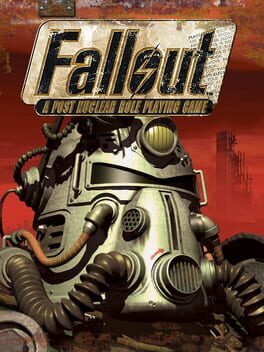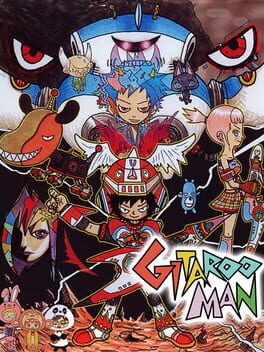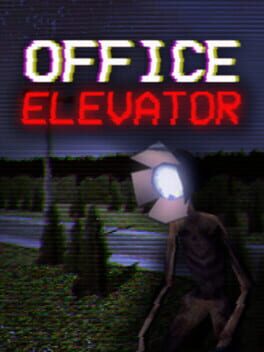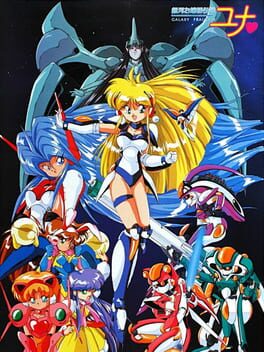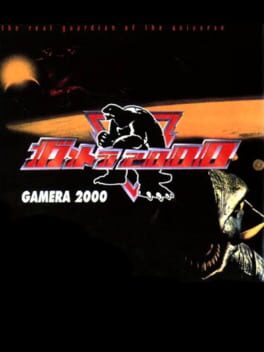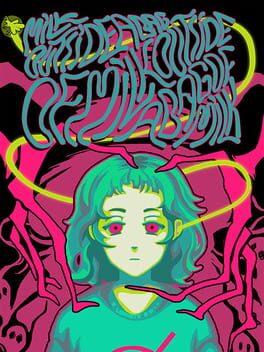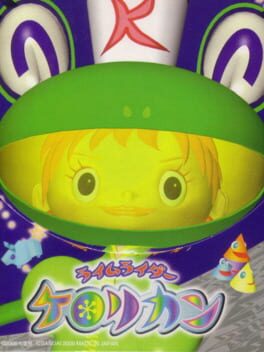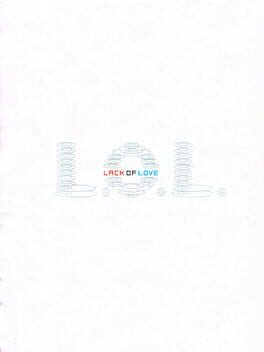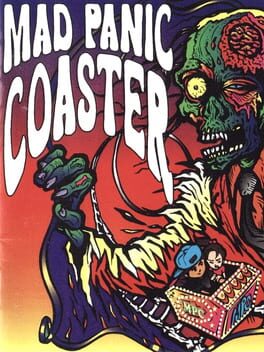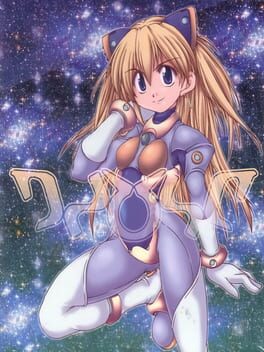213 Reviews liked by anita
The Motion Gravure releases are bad. They are a failed experiment utilizing new technology with very little to offer as either an interactive experience or a work of eroticism. BUT, they are also so incredibly bizarre to see; virtual nausea delivered straight to your eyeballs.
In this one, Harumi morphs and twists, body mutating, disfiguring. She points a gun at her head. Unlocked secret scenes appear over a pentagram, and when all are discovered, she bathes in milk.
Playing Motion Gravure is to experience something beyond us, something no person was ever meant to see. The camera cuts to the ocean waves, again and again, to which we will all return.
Read more here
In this one, Harumi morphs and twists, body mutating, disfiguring. She points a gun at her head. Unlocked secret scenes appear over a pentagram, and when all are discovered, she bathes in milk.
Playing Motion Gravure is to experience something beyond us, something no person was ever meant to see. The camera cuts to the ocean waves, again and again, to which we will all return.
Read more here
Fallout
1997
The trouble with calling something “ahead of its time” is that it implies whatever made that something so special has become standard since its release. It’s easy to describe Fallout like that, or to say it’s “impressive for 1997” as if standards only ever improve over time, until you look around and realise how few RPGs since Fallout have even attempted to replicate what makes it such an excellent game, including its own sequels. Had they, it’s doubtful that Fallout would be subject to as many hyperbolic horror stories as it is today.
Among the most infamous and exaggerated of these is the time limit of Fallout’s main quest, which isn’t just arguably more generous than it should be even if you don’t choose to extend it, but also disappears halfway through anyhow. That makes it sound like a non-factor, but it’s an essential part of what makes Fallout a step above. No matter how generous it might be, the fact that it’s there at all creates a kind of congruence between player and protagonist that isn’t there in any other Fallout game, or many RPGs in general. Everything you do in Fallout is coloured by the underlying sense of urgency that it’s game over, literally and figuratively, if you spend too much time gallivanting about the wastes instead of on your core responsibility. The plights of Arroyo, Liam Neeson and Hoover Dam can wait until the Chosen One, Lone Wanderer and Courier feel like doing something about it, but unlike them, the world doesn’t revolve around the Vault Dweller. It probably doesn’t need to be said how much more synergistic this is with Fallout’s harsh setting than any its follow-ups, or how relieving it is when you finally get your hands on that water chip.
What this is indicative of is Fallout’s larger design philosophy – it isn’t afraid to let you make mistakes. Yes, you’re going to have a particularly hard time if you don’t dump points into your Agility, but why shouldn’t you? It makes sense that someone who isn’t quick on their feet shouldn’t be able to easily get by in such a hellish place. You feel the consequences of neglecting a particular S.P.E.C.I.A.L. stat more palpably here than in any other Fallout bar 2, most famously with how low Intelligence makes every single conversation in the game more strained (to say the least).
This design extends beyond character building, too. Fallout trusts players to figure out for themselves which dialogue options are affected by a high speech skill, instead of highlighting them for you as all of the 3D games do. Choose your words poorly upon meeting someone for the first time and their opinion of you can be permanently dampened for the rest of the game, signalled to you organically with a change in their facial expression, potentially locking you out of quests or causing others in the locale to distrust you. If things go really south, no punches are pulled in terms of everybody being expendable – you can go as far as to kill children, and making a good first impression with even evil characters becomes an uphill battle if you do.
In general, I don’t think killing things in Fallout is anywhere near as much of a drag as it’s often made out to be either. Weighing up how much AP to spend on either moving to get to a more advantageous position and reduce the amount of actions enemies can potentially take, or on attacking them definitely gets the gears in your head turning to some extent. Damage sound effects in this series never sounded anywhere near as satisfying after ditching the thumps and thwacks of this and Fallout 2, which make for some nice feedback on attacks when taken in tandem with the wonderfully gory sprite work. Being able to destroy or pry open doors enables ways for you to creatively manoeuvre through combat encounters and lets you progress quests in ways that you can’t in later titles, plus the amount of different hit reactions for each part of each enemy’s body is also pretty novel. You won’t be making any Combo MADs out of this, but if you don’t get even a hint of enjoyment out of seeing somebody gently slide across half of Los Angeles after they’ve been smacked with a sledgehammer, I probably don’t trust you.
What I do trust is Fallout’s ability to engross me in its world every single time I play it. Listen to how haunting this is, and then be aware that every other track in the game is at least on par with it. The ambient clicking and clacking of now ancient wartime equipment, the cosy boxed-in presentation of the HUD and its descriptive flavour text in its bottom left, the freaky architecture with all its giant heads... they all combine to sell the feeling of really being there, rivalling the best of any other game that predicates itself on immersion. When you encounter a voiced character and the music cuts you know you’re in for a proper event, bolstered by across the board stellar performances from tons of classic 90s voice actors that utterly command your attention. Meeting the Master and hearing him jolt his way through his iconic monologue about the Unity is like one long lesson in why he ended up defining the guy-with-good-intentions-does-the-wrong-thing-for-the-right-reasons-and-also-you-can-talk-him-to-death archetype. No Fallout antagonist has come close ever since (as cool as Frank Horrigan might be), be it in terms of motivations, the lengths you have to go to convince him that he’s in the wrong, anything.
Fallout is a remarkably pure translation of vision to game, and as another comment on here points out, it’s simply not given its dues as often as it ought to be. Even with this proverbial Vault of text, I still haven’t touched on everything it does well – for one thing, I can’t believe the Tell Me About feature didn’t become standard in every RPG made after this game’s release – but I hope this does it some justice all the same. Do give it a chance at some point if you haven’t already, and don’t be put off by any claims of “jank” or “clunk” or whatever other nebulous jargon you could just as easily apply to any of its much more recent successors. I first played Fallout well over a decade after it came out after being introduced to the series with 3, and even as a kid, I never found myself wishing it was more like the modern RPGs I was accustomed to. Quite the opposite.
I wanted to cap this off with a twist on “you’re a hero and you have to leave,” Fallout being the hero, but my Int is too low to make it sound clever. In the interest of avoiding a critical miss, I present a rare but thematically appropriate Todd. Will trade for either 20 caps or an iguana on a stick.
Among the most infamous and exaggerated of these is the time limit of Fallout’s main quest, which isn’t just arguably more generous than it should be even if you don’t choose to extend it, but also disappears halfway through anyhow. That makes it sound like a non-factor, but it’s an essential part of what makes Fallout a step above. No matter how generous it might be, the fact that it’s there at all creates a kind of congruence between player and protagonist that isn’t there in any other Fallout game, or many RPGs in general. Everything you do in Fallout is coloured by the underlying sense of urgency that it’s game over, literally and figuratively, if you spend too much time gallivanting about the wastes instead of on your core responsibility. The plights of Arroyo, Liam Neeson and Hoover Dam can wait until the Chosen One, Lone Wanderer and Courier feel like doing something about it, but unlike them, the world doesn’t revolve around the Vault Dweller. It probably doesn’t need to be said how much more synergistic this is with Fallout’s harsh setting than any its follow-ups, or how relieving it is when you finally get your hands on that water chip.
What this is indicative of is Fallout’s larger design philosophy – it isn’t afraid to let you make mistakes. Yes, you’re going to have a particularly hard time if you don’t dump points into your Agility, but why shouldn’t you? It makes sense that someone who isn’t quick on their feet shouldn’t be able to easily get by in such a hellish place. You feel the consequences of neglecting a particular S.P.E.C.I.A.L. stat more palpably here than in any other Fallout bar 2, most famously with how low Intelligence makes every single conversation in the game more strained (to say the least).
This design extends beyond character building, too. Fallout trusts players to figure out for themselves which dialogue options are affected by a high speech skill, instead of highlighting them for you as all of the 3D games do. Choose your words poorly upon meeting someone for the first time and their opinion of you can be permanently dampened for the rest of the game, signalled to you organically with a change in their facial expression, potentially locking you out of quests or causing others in the locale to distrust you. If things go really south, no punches are pulled in terms of everybody being expendable – you can go as far as to kill children, and making a good first impression with even evil characters becomes an uphill battle if you do.
In general, I don’t think killing things in Fallout is anywhere near as much of a drag as it’s often made out to be either. Weighing up how much AP to spend on either moving to get to a more advantageous position and reduce the amount of actions enemies can potentially take, or on attacking them definitely gets the gears in your head turning to some extent. Damage sound effects in this series never sounded anywhere near as satisfying after ditching the thumps and thwacks of this and Fallout 2, which make for some nice feedback on attacks when taken in tandem with the wonderfully gory sprite work. Being able to destroy or pry open doors enables ways for you to creatively manoeuvre through combat encounters and lets you progress quests in ways that you can’t in later titles, plus the amount of different hit reactions for each part of each enemy’s body is also pretty novel. You won’t be making any Combo MADs out of this, but if you don’t get even a hint of enjoyment out of seeing somebody gently slide across half of Los Angeles after they’ve been smacked with a sledgehammer, I probably don’t trust you.
What I do trust is Fallout’s ability to engross me in its world every single time I play it. Listen to how haunting this is, and then be aware that every other track in the game is at least on par with it. The ambient clicking and clacking of now ancient wartime equipment, the cosy boxed-in presentation of the HUD and its descriptive flavour text in its bottom left, the freaky architecture with all its giant heads... they all combine to sell the feeling of really being there, rivalling the best of any other game that predicates itself on immersion. When you encounter a voiced character and the music cuts you know you’re in for a proper event, bolstered by across the board stellar performances from tons of classic 90s voice actors that utterly command your attention. Meeting the Master and hearing him jolt his way through his iconic monologue about the Unity is like one long lesson in why he ended up defining the guy-with-good-intentions-does-the-wrong-thing-for-the-right-reasons-and-also-you-can-talk-him-to-death archetype. No Fallout antagonist has come close ever since (as cool as Frank Horrigan might be), be it in terms of motivations, the lengths you have to go to convince him that he’s in the wrong, anything.
Fallout is a remarkably pure translation of vision to game, and as another comment on here points out, it’s simply not given its dues as often as it ought to be. Even with this proverbial Vault of text, I still haven’t touched on everything it does well – for one thing, I can’t believe the Tell Me About feature didn’t become standard in every RPG made after this game’s release – but I hope this does it some justice all the same. Do give it a chance at some point if you haven’t already, and don’t be put off by any claims of “jank” or “clunk” or whatever other nebulous jargon you could just as easily apply to any of its much more recent successors. I first played Fallout well over a decade after it came out after being introduced to the series with 3, and even as a kid, I never found myself wishing it was more like the modern RPGs I was accustomed to. Quite the opposite.
I wanted to cap this off with a twist on “you’re a hero and you have to leave,” Fallout being the hero, but my Int is too low to make it sound clever. In the interest of avoiding a critical miss, I present a rare but thematically appropriate Todd. Will trade for either 20 caps or an iguana on a stick.
Gitaroo Man
2001
the most common criticism i hear towards Gitaroo Man is in regards to it's difficulty, and where it really comes into play during the game's campaign. some say it happens in the 2nd half of the game, and few suggest that it gets challenging right at the start during stage 2. i reject this notion. no point of this game is nearly as challenging as the very end, as it's extremely difficult to play a fast paced rhythm game with tears in my eyes
Office Elevator
2022
Galaxy Fräulein Yuna
1992
I guess I lied about playing more then just Bomberman in terms of playing only 1 PC Engine game for the time being. I couldn't help myself, I was really curious about this game so I gave it a go and honestly I really enjoyed it.
This game is mostly a visual novel so if that is a genre you like, you should give this a look. It's got a nice 90s anime vibe. Well I guess it was made in 1992. It's games like these that really make me see the appeal of the system especially to someone in Japan. I'm not sure if the Sega CD could do what this game does but I was impressed with all of the voice acting and cutscenes. The voice acting is rather nice but it is compressed.
While this game is fun and can have some fun writing, sometimes the story can feel repetitive with you just going to location to location just to find one of the 13 dark frauleins to fight. Though it won't stop the game from being fun a lot of the time. It's got a lot of fun characters and I really like Yuna.
Another gripe I could give the game is the battles. Now I assume they were made with the intention of being super simple, especially since they could detract from people just wanting to enjoy the story. Sadly they just get a little old after a while so I ended up using speed up. The most fun I had was just seeing what verbal abuse Yuna could say to the girls.
The music is kind of hit and miss. Some of it is really good especially the CD vocal songs that feel straight out of an anime. However some of it is just kind of grating and repetitive and the sound mixing is kind of poor at times. The biggest surprise to me was hearing the Bomberman PC Engine Title Screen theme and then actual Bomberman showing up, how does this happen after my first game on this console being Bomberman?
There's a lot to like about this game even if it isn't perfect and hell I'm not even sure if there are lose scenarios in the VN sections. I tried purposefully seeing if there were any in some situations but they just don't lead to anything bad. If anyone has found one, would appreciate to know just out of curiosity. I'm excited to play the sequel to this someday, I'm hoping it's even better!
This game is mostly a visual novel so if that is a genre you like, you should give this a look. It's got a nice 90s anime vibe. Well I guess it was made in 1992. It's games like these that really make me see the appeal of the system especially to someone in Japan. I'm not sure if the Sega CD could do what this game does but I was impressed with all of the voice acting and cutscenes. The voice acting is rather nice but it is compressed.
While this game is fun and can have some fun writing, sometimes the story can feel repetitive with you just going to location to location just to find one of the 13 dark frauleins to fight. Though it won't stop the game from being fun a lot of the time. It's got a lot of fun characters and I really like Yuna.
Another gripe I could give the game is the battles. Now I assume they were made with the intention of being super simple, especially since they could detract from people just wanting to enjoy the story. Sadly they just get a little old after a while so I ended up using speed up. The most fun I had was just seeing what verbal abuse Yuna could say to the girls.
The music is kind of hit and miss. Some of it is really good especially the CD vocal songs that feel straight out of an anime. However some of it is just kind of grating and repetitive and the sound mixing is kind of poor at times. The biggest surprise to me was hearing the Bomberman PC Engine Title Screen theme and then actual Bomberman showing up, how does this happen after my first game on this console being Bomberman?
There's a lot to like about this game even if it isn't perfect and hell I'm not even sure if there are lose scenarios in the VN sections. I tried purposefully seeing if there were any in some situations but they just don't lead to anything bad. If anyone has found one, would appreciate to know just out of curiosity. I'm excited to play the sequel to this someday, I'm hoping it's even better!
Gamera 2000
1997
Trauma-induced delusions are one of the least supported and understood areas of mental health that is represented in media/larger society in general. So I was incredibly skeptical discovering there was a sequel to the original "bag of Milk" game.
The first game kind of felt like it was trying to express how the player cannot ever understand the experiences of those that exist within fiction and telling a challenging story within that. It follows a protagonist who is attempting to go outside of her home for the first time since her father died with monsters and cruel thoughts following her every step. Along the way the player is interacting with her thoughts and representing a sort of "medication" for her. This first game doesn't necessarily succeed in its aims. However due to it's short amount of timespan and ambiguity in low fidelity it surprisingly doesn't feel exploitative. Instead it just feels like a short story that presents us with ideas and images for us to carry and think about.
By making a second game in relation to this, I have to wonder what the goals are. Why do the ideas and images from the first title need to be expanded upon? Unfortunately it feels like "Milk outside" doubles down on the moments from the previous title as a means of reveling in traumatic iconography. This sheds the sympathetic lens formed from the first game's lo-fi constrained ambitions, and reveals a voyeuristic kaleidoscope of torturistic pleasure with higher fidelity animation and visuals.
I have heard there is some pretty cool stuff the game does with narrative structures and I also think it looks nice. However, I just don't feel a desire to play through more of this game's depictions of delusions and trauma.
The first game kind of felt like it was trying to express how the player cannot ever understand the experiences of those that exist within fiction and telling a challenging story within that. It follows a protagonist who is attempting to go outside of her home for the first time since her father died with monsters and cruel thoughts following her every step. Along the way the player is interacting with her thoughts and representing a sort of "medication" for her. This first game doesn't necessarily succeed in its aims. However due to it's short amount of timespan and ambiguity in low fidelity it surprisingly doesn't feel exploitative. Instead it just feels like a short story that presents us with ideas and images for us to carry and think about.
By making a second game in relation to this, I have to wonder what the goals are. Why do the ideas and images from the first title need to be expanded upon? Unfortunately it feels like "Milk outside" doubles down on the moments from the previous title as a means of reveling in traumatic iconography. This sheds the sympathetic lens formed from the first game's lo-fi constrained ambitions, and reveals a voyeuristic kaleidoscope of torturistic pleasure with higher fidelity animation and visuals.
I have heard there is some pretty cool stuff the game does with narrative structures and I also think it looks nice. However, I just don't feel a desire to play through more of this game's depictions of delusions and trauma.
The final game in NanaOn-Sha's initial debuts, but also the most overlooked one. Following a Space Channel 5-esque premise, the player must help Rhyme Rider Kerorican through various interplanetary songs. The art style, is super strong and I wish that there was more of it because we never see a NanaOn-Sha game that looks like this ever again.
I don't think there are many songs in Rhyme Rider Kerorican, and perhaps thats why it is so little remembered. However, there is an embodied emotion in the game design that I don't feel from any of the other NanaOn games. The sound is crackly and low quality, and once you hit the flow of notes, the animations string together into an absolutely wild frenzy of images. It captured the surprises of jazz and the pleasures of keeping the beat. On top of this, it isn't incredibly punishing while you figure things out. Something that is rare in many rhythm games today.
I don't think there are many songs in Rhyme Rider Kerorican, and perhaps thats why it is so little remembered. However, there is an embodied emotion in the game design that I don't feel from any of the other NanaOn games. The sound is crackly and low quality, and once you hit the flow of notes, the animations string together into an absolutely wild frenzy of images. It captured the surprises of jazz and the pleasures of keeping the beat. On top of this, it isn't incredibly punishing while you figure things out. Something that is rare in many rhythm games today.
L.O.L.: Lack of Love
2000
Completely wordless honest master class narrative stressing the importance of care, love, unity. Almost feels like edutainment in the sense that it is perfectly crafted for small hands to slowly worm their way through the world, evolving and experimenting with all the very charming animals to see all the beauty. Didn't leave me with any strong feelings tho ;-; but it was always just,,, nice to experience. Lovely to sit down, interact with the full scope of these kind, unique and alien creatures to find their human, cute, and often interesting sense of becoming friends. L-D-L really Knew the world.
ActRaiser
1990
So, you're God. No work-arounds, you're simply God, and you take care of your people and your creation. People go to the temple to revere you and give you offerings that help you. People's faith strengthens you.
At the end of the game, once you're finished with your work and have defeated evil, people stop visiting temples. Why? Because they don't need you anymore. The game reveals itself as a bitter allegory of people's relationship with religion, a very common theme in Quintet's games in the 90s.
ActRaiser utilizes God simulation mechanics to make the player a direct participant in creation to form a bond to the people that have faith in you and make the finale more resonant.
At the end of the game, once you're finished with your work and have defeated evil, people stop visiting temples. Why? Because they don't need you anymore. The game reveals itself as a bitter allegory of people's relationship with religion, a very common theme in Quintet's games in the 90s.
ActRaiser utilizes God simulation mechanics to make the player a direct participant in creation to form a bond to the people that have faith in you and make the finale more resonant.
Azusa 999
1997
"But rest assured, it was spectacular"
Eye-opening little piece of videogame heritage - an early RPGMaker project that was released in 1997 for the PC-98, yet has many of the modern quirks you generally expect from similar titles that are shared nowadays. Being the sole handiwork of a young creator, there's a certain naivety to the way it presents its little vignettes of despair and hope, but they're handled with such sensitive care that they simply don't fail at being evocative. While I'm not particularly blown away by the subject matter nor symbolism, it's so easy to get swept up by how emotionally charged it comes across, and thorny in the ways all the most resonant stories are. I must extend some laudation for them having the courage to publish it at a time where this was far from the norm or in demand.
RPGMaker trappings are present, but relatively forgivable if only because I have no idea how inflexible RPGMD98 is. Despite structural rigidity, it manages to play with the form - the spell list is formatted like pages of a diary, the player's level suggests the character's age, etc. Rest assured, there is no combat, I have to wonder how easy it was to resist implementing it despite being the engine's primary function - there are a handful of modern atmospheric/emotionally forward RPGMaker titles that insist on it despite no benefit. Azusa 999 is even stylised in a way that honestly feels timeless (I honestly thought for the longest time that this was a Bitsy game!), minimalist environs and slim colour palettes - even atmospheric ambience shifts to match story beats, it really did suck me in!
Azusa 999's English translation was as recent as 2020, gracefully packaged with an application holder that casts aside the headache of setting up a PC-98 emulator, as well as a wonderful player companion guide by translator Obskyr complete with a historical foreword and cultural notes. It's all a wonderful read, and fills me with hope that any number of old, forward-thinking, experimental or personal projects from the early Japanese indie scene are still just waiting to be shared across the pond.
Eye-opening little piece of videogame heritage - an early RPGMaker project that was released in 1997 for the PC-98, yet has many of the modern quirks you generally expect from similar titles that are shared nowadays. Being the sole handiwork of a young creator, there's a certain naivety to the way it presents its little vignettes of despair and hope, but they're handled with such sensitive care that they simply don't fail at being evocative. While I'm not particularly blown away by the subject matter nor symbolism, it's so easy to get swept up by how emotionally charged it comes across, and thorny in the ways all the most resonant stories are. I must extend some laudation for them having the courage to publish it at a time where this was far from the norm or in demand.
RPGMaker trappings are present, but relatively forgivable if only because I have no idea how inflexible RPGMD98 is. Despite structural rigidity, it manages to play with the form - the spell list is formatted like pages of a diary, the player's level suggests the character's age, etc. Rest assured, there is no combat, I have to wonder how easy it was to resist implementing it despite being the engine's primary function - there are a handful of modern atmospheric/emotionally forward RPGMaker titles that insist on it despite no benefit. Azusa 999 is even stylised in a way that honestly feels timeless (I honestly thought for the longest time that this was a Bitsy game!), minimalist environs and slim colour palettes - even atmospheric ambience shifts to match story beats, it really did suck me in!
Azusa 999's English translation was as recent as 2020, gracefully packaged with an application holder that casts aside the headache of setting up a PC-98 emulator, as well as a wonderful player companion guide by translator Obskyr complete with a historical foreword and cultural notes. It's all a wonderful read, and fills me with hope that any number of old, forward-thinking, experimental or personal projects from the early Japanese indie scene are still just waiting to be shared across the pond.
L.O.L.: Lack of Love
2000
Beaten: Oct 27 2021
Time: 6ish Hours
Platform: Dreamcast
I’m not sure why I’m surprised that Lack of Love, like the other Love de lic game I’ve played (Moon), is a monstrously creative and pinpoint focused art-adventure game, since that’s kind of Kenichi Nishi (the director of the game)’s whole thing. Even still, this one feels different. Almost angry, disappointed and dissatisfied with the way the world is heading. It's still optimistic, but it gets dark, almost depressive, for a while there. What a note for Love de lic to go out on.
LoL starts out with a short cutscene showing a (rather cute!) robot landing on a planet and beginning to terraform it. After that, it cuts to some ready-to-hatch eggs at the bottom of a small pool. In true LdL fashion, your life timer has already started, and if you don't do anything you'll die. So wiggle that analog stick until you hatch, and crawl out of that primoridal pool into the world, ready for the game to begin in earnest.
The bulk of this game is a twist on normal adventure game fare. Basically, you're not the only creature on this planet. Some of your fellow animals (as denoted in the pause menu) need help surviving, or just want to play, and when you help them out they'll give you a "gift", some kind of life force you'll use to metamorphosize into the next stage of your life cycle. It's usually not exactly clear what you need to do, so you'll need to pay attention to everything around you while you play, and near the end you might need to look up a guide. It's definitely obtuse, but not much more than your typical adventure game is, and not nearly as unclear as Moon can be.
Just like Moon however, the puzzle design isn't really what I came here for, and I'll bet it's not really what you came for either. It might be an adventure game, but the emphasis here is on the message and the aesthetic more than anything else, and God Damn based on those metrics alone this game is a 10. I don't wanna spoil some of the more interesting things it does, but rest assured, this is one of the most viscerally affecting games I've ever played, both in the sphere of environmentall conscious games and the wider sphere of games as a whole.
I don't know how this game managed to surpass my expectations, but I think it did it by going completely around them. I've never played an adventure game like this before, and I probably never will again. It's a special game, for all it's obtuse-ness, and I wholly recommend it. Also though don't feel bad about using a guide, some of these puzzles are really really out there
Time: 6ish Hours
Platform: Dreamcast
I’m not sure why I’m surprised that Lack of Love, like the other Love de lic game I’ve played (Moon), is a monstrously creative and pinpoint focused art-adventure game, since that’s kind of Kenichi Nishi (the director of the game)’s whole thing. Even still, this one feels different. Almost angry, disappointed and dissatisfied with the way the world is heading. It's still optimistic, but it gets dark, almost depressive, for a while there. What a note for Love de lic to go out on.
LoL starts out with a short cutscene showing a (rather cute!) robot landing on a planet and beginning to terraform it. After that, it cuts to some ready-to-hatch eggs at the bottom of a small pool. In true LdL fashion, your life timer has already started, and if you don't do anything you'll die. So wiggle that analog stick until you hatch, and crawl out of that primoridal pool into the world, ready for the game to begin in earnest.
The bulk of this game is a twist on normal adventure game fare. Basically, you're not the only creature on this planet. Some of your fellow animals (as denoted in the pause menu) need help surviving, or just want to play, and when you help them out they'll give you a "gift", some kind of life force you'll use to metamorphosize into the next stage of your life cycle. It's usually not exactly clear what you need to do, so you'll need to pay attention to everything around you while you play, and near the end you might need to look up a guide. It's definitely obtuse, but not much more than your typical adventure game is, and not nearly as unclear as Moon can be.
Just like Moon however, the puzzle design isn't really what I came here for, and I'll bet it's not really what you came for either. It might be an adventure game, but the emphasis here is on the message and the aesthetic more than anything else, and God Damn based on those metrics alone this game is a 10. I don't wanna spoil some of the more interesting things it does, but rest assured, this is one of the most viscerally affecting games I've ever played, both in the sphere of environmentall conscious games and the wider sphere of games as a whole.
I don't know how this game managed to surpass my expectations, but I think it did it by going completely around them. I've never played an adventure game like this before, and I probably never will again. It's a special game, for all it's obtuse-ness, and I wholly recommend it. Also though don't feel bad about using a guide, some of these puzzles are really really out there
Mad Panic Coaster
1997
This arcade-style roller coaster thrill ride, published in 1997 by Japanese ad agency Hakuhodo for the Playstation, is deliriously dumb in the smartest ways; a stunning landmark in adrenaline and digital speed, a sustained “oh my god” stuffed into the throat. With a viscous difficulty to match its high energy punk and ska soundtrack from genre legend Ken Yokoyama, the game pushes away from realism and fully embraces its own rebelliously silly aesthetic, capturing the thrills and stupid fun of a roller coaster better than anything else I’ve ever seen.
A "play for 10 minutes a day" masterpiece.
More thoughts here!: https://baxtersmono.medium.com/mad-panic-coaster-speed-thrills-and-the-joys-of-anxiety-28ebf25d7329
A "play for 10 minutes a day" masterpiece.
More thoughts here!: https://baxtersmono.medium.com/mad-panic-coaster-speed-thrills-and-the-joys-of-anxiety-28ebf25d7329
_____
2014
Abstracting and replicating patterns in harmonizing ways are some of humanity's greatest strengths as a species. Everyone knows nothing is created and that it’s all transformed, but the way in which we apply this logic in creating media is what determines whether our names shall be salvaged by history books or left to rot alongside us. When a groundbreaking title, such as a videogame, is released, everyone wants to have a piece of their own, inevitably trying to subtract what was essential for its success and applying it in different areas, in the hopes of either improving the new established norm or trying to find some success with different audiences drawn out by its newly attained fame. We always fail to take into consideration however, that even the most revolutionary discoveries like gravity, needed some sort of apple like object from somewhere else, to be fully remodeled into a genuine theory.
Dodonpachi, the cult bullet hell from ‘97 didn’t invent the shmup wheel by any means, but it improved on it massively, to the point that the symbol of the game, a quirked up bee, slowly became a cult icon for gaming as a whole. Taking direct inspiration from what it worked previously from games beloved by the recently formed STG fans, it abstracted what worked from games made by Toaplan and Raizing, to produce what some consider to be one of the most important titles to the genre of all time. One of the areas in which Dodonpachi is really memorable, is the story which it tells, mostly because you are treated with no explanations ingame for what's happening until shit hits the fan. The style in which Cave would later adopt regarding exposition would improve in their subsequent titles, however the lack of questions answered in obtuse narratives was not only kept as an already established genre tradition, but was also utterly solidified as one, as the question "Why copy this part too, sir?" wasn't asked enough times.
A lot of classic 90's and 00’s shoot ‘em ups have stories that pass flashing by as remnants of a proper one, due to the nature of how arcade titles were consumed, and how expensive it was to produce cutscenes, usually being reserved for openings made solely to attract new players. What is happening to the characters during the screen flashes of ESP Ra.De? Who are they fighting for in Progear? What do Ikaruga passages between levels tell me about the world? Even games that try to be more in your face, without the previously established archaic arcade limitations, that uphold proper dialogue such as Zero Ranger, Radiant Silvergun and the Touhou series, still give a sensation that something you can’t quite point out is missing whenever you think about the grand scheme of things, almost as if you joined a movie in the second half. The narrative of a classic shmup game are most of the time just the aesthetics, and that's not necessarily bad.
By being exposed to small glimpses of the situation your character finds themselves in, only the pastiche of war stories such as Aces High or Secret Invasion, and other heroic warfare tales being told by shonen anime lenses, remain. In the end it wouldn’t make much of a difference, would it? Your very nature as a player of just assuming the position of an underwhelmingly small war machine, bravely dismantling a whole army just by yourself, requires no explanations, instead just being relegated to something similar as the climax of a mindless yet amazingly produced power fantasy movie. Of course, not all games need to have complex stories (or stories at all), but it makes me wonder if this was a deliberate artistic choice or one made to maximize profit. I believe this unpronounceable title to be the first legitimate subversive shmup story, but to properly explain that let’s talk first about this genre's conventions.
Both in game and in the menus, your eyes will be assaulted by 28 different symbols that substitute not only our usual aramaic alphabet, but our precious arabic numbers as well. Trying to understand what’s happening in the game might seem like an easy task at first if you ignore the dialogue, however eventually you’ll notice that the alien appearance of the game also extends to the way your trusty weapon works. You only have 2 buttons besides the one that pauses, one for shooting and one for switching weapons, which I’ll be calling the cross arrangement since it has no official name and because I think it sounds cool (also because until you master it, you better pray for it).
The way the cross arrangement works is that you’ll spend approximately half a second without shooting and the last input in which you pressed (moving, shooting or even doing nothing at all) will change your shooting pattern, from wide, to more focused, aimed backwards, X shaped, auto guiding… and so on. Early on you have 4 patterns to which you can transition easily, however you can find up to 24 more by shooting on the screen in some specific areas to unlock way more, expanding in your options. Ranging from a curse and a blessing, you might panic sometimes not knowing to which pattern you can transition from. It’s a very unique sensation that I felt during a desperate struggle to maintain control of my own weapons, in an increasingly difficult double edged overly complicated system.
There is a menu dedicated to leveling up, however because you can’t interpret what’s on screen, it’s a question of trying to decipher how far off from getting an upgrade you are. Even worse, if you gather points by playing solely the last levels, the algorithm doesn’t bend back to upgrade your early necessities, in an incredibly bizarre way that feels like you can only buy such upgrades if you have enough money, but not too much in your wallet. Applying and understanding how each and everyone works (except the obligatory life upgrade), is another challenge in itself, even after beating the game 2 times to make this review, I still don’t properly understand what they do. Googling for help the day before was hilarious, because not only I was trying to understand a really cryptic and specific tool in the game, but also I couldn’t find a way to look for the title’s name itself, as just searching ‘_____’ showed me results similar to the peculiar I’m Feeling Lucky button.
The way in which the story is told is not exactly what you think it is from such an offbeat shoot ‘em up. Riding through different planets with small transitions only to fight against seemingly similar enemies from the ones before, just to encounter a rival that fights using your own moves while speaking complete gibberish, is something that feels oddly familiar, even if you can’t point out a specific title that does it. The alienation to which we have been exposed to STG narratives existed even in its infancy in the 80’s, when it was filled to the brim with nonspecific all-encompassing space odysseys, striking back once again with added relatively modern shmup anime lenses from the 90’s and 00’s laid back game design choices of continuing in a multitude of ways, to the mix. The proper ending of the game made it all worth it, explaining not only the stylistic choices found in this peculiar galaxy adventure, but also the very nature of this game release, which I won’t spoil because I think it is particularly genius. Consider this a challenge to beat the game, for everyone who’s reading.
For a title to have such a unique and hard way to find, it sure was made by a studio that covers itself with unusual stylistic choices aimed directly at those who end up stumbling on the title, like someone who just found out a secret pile of gold. Just to give some small context about Platine Dispositif, they had a game vanish from Steam, in which you had to unlock the ability to walk. Obscurity by choice in a game that plays itself as being an abstracted version of repeating the genre’s usual staples while still carrying purposefully unfamiliar visuals and mechanics that forces you to abstract the genre’s conventions on your own, is what some may call ‘art’. Being inventive even in the way in which it was released, as to having such a name that the only video I could find about it attached a "?" to the game’s title, is a very unfamiliar sensation in the medium of video games. From a regurgitating genre full of familiar sameness, this unpronounceable title shines, in the bottom of everyone’s obscure radar, as a certified shmup ultra obscure classic.
Now, pray and tell me oh local Backloggd user.
How did you even find this page?
Dodonpachi, the cult bullet hell from ‘97 didn’t invent the shmup wheel by any means, but it improved on it massively, to the point that the symbol of the game, a quirked up bee, slowly became a cult icon for gaming as a whole. Taking direct inspiration from what it worked previously from games beloved by the recently formed STG fans, it abstracted what worked from games made by Toaplan and Raizing, to produce what some consider to be one of the most important titles to the genre of all time. One of the areas in which Dodonpachi is really memorable, is the story which it tells, mostly because you are treated with no explanations ingame for what's happening until shit hits the fan. The style in which Cave would later adopt regarding exposition would improve in their subsequent titles, however the lack of questions answered in obtuse narratives was not only kept as an already established genre tradition, but was also utterly solidified as one, as the question "Why copy this part too, sir?" wasn't asked enough times.
A lot of classic 90's and 00’s shoot ‘em ups have stories that pass flashing by as remnants of a proper one, due to the nature of how arcade titles were consumed, and how expensive it was to produce cutscenes, usually being reserved for openings made solely to attract new players. What is happening to the characters during the screen flashes of ESP Ra.De? Who are they fighting for in Progear? What do Ikaruga passages between levels tell me about the world? Even games that try to be more in your face, without the previously established archaic arcade limitations, that uphold proper dialogue such as Zero Ranger, Radiant Silvergun and the Touhou series, still give a sensation that something you can’t quite point out is missing whenever you think about the grand scheme of things, almost as if you joined a movie in the second half. The narrative of a classic shmup game are most of the time just the aesthetics, and that's not necessarily bad.
By being exposed to small glimpses of the situation your character finds themselves in, only the pastiche of war stories such as Aces High or Secret Invasion, and other heroic warfare tales being told by shonen anime lenses, remain. In the end it wouldn’t make much of a difference, would it? Your very nature as a player of just assuming the position of an underwhelmingly small war machine, bravely dismantling a whole army just by yourself, requires no explanations, instead just being relegated to something similar as the climax of a mindless yet amazingly produced power fantasy movie. Of course, not all games need to have complex stories (or stories at all), but it makes me wonder if this was a deliberate artistic choice or one made to maximize profit. I believe this unpronounceable title to be the first legitimate subversive shmup story, but to properly explain that let’s talk first about this genre's conventions.
Both in game and in the menus, your eyes will be assaulted by 28 different symbols that substitute not only our usual aramaic alphabet, but our precious arabic numbers as well. Trying to understand what’s happening in the game might seem like an easy task at first if you ignore the dialogue, however eventually you’ll notice that the alien appearance of the game also extends to the way your trusty weapon works. You only have 2 buttons besides the one that pauses, one for shooting and one for switching weapons, which I’ll be calling the cross arrangement since it has no official name and because I think it sounds cool (also because until you master it, you better pray for it).
The way the cross arrangement works is that you’ll spend approximately half a second without shooting and the last input in which you pressed (moving, shooting or even doing nothing at all) will change your shooting pattern, from wide, to more focused, aimed backwards, X shaped, auto guiding… and so on. Early on you have 4 patterns to which you can transition easily, however you can find up to 24 more by shooting on the screen in some specific areas to unlock way more, expanding in your options. Ranging from a curse and a blessing, you might panic sometimes not knowing to which pattern you can transition from. It’s a very unique sensation that I felt during a desperate struggle to maintain control of my own weapons, in an increasingly difficult double edged overly complicated system.
There is a menu dedicated to leveling up, however because you can’t interpret what’s on screen, it’s a question of trying to decipher how far off from getting an upgrade you are. Even worse, if you gather points by playing solely the last levels, the algorithm doesn’t bend back to upgrade your early necessities, in an incredibly bizarre way that feels like you can only buy such upgrades if you have enough money, but not too much in your wallet. Applying and understanding how each and everyone works (except the obligatory life upgrade), is another challenge in itself, even after beating the game 2 times to make this review, I still don’t properly understand what they do. Googling for help the day before was hilarious, because not only I was trying to understand a really cryptic and specific tool in the game, but also I couldn’t find a way to look for the title’s name itself, as just searching ‘_____’ showed me results similar to the peculiar I’m Feeling Lucky button.
The way in which the story is told is not exactly what you think it is from such an offbeat shoot ‘em up. Riding through different planets with small transitions only to fight against seemingly similar enemies from the ones before, just to encounter a rival that fights using your own moves while speaking complete gibberish, is something that feels oddly familiar, even if you can’t point out a specific title that does it. The alienation to which we have been exposed to STG narratives existed even in its infancy in the 80’s, when it was filled to the brim with nonspecific all-encompassing space odysseys, striking back once again with added relatively modern shmup anime lenses from the 90’s and 00’s laid back game design choices of continuing in a multitude of ways, to the mix. The proper ending of the game made it all worth it, explaining not only the stylistic choices found in this peculiar galaxy adventure, but also the very nature of this game release, which I won’t spoil because I think it is particularly genius. Consider this a challenge to beat the game, for everyone who’s reading.
For a title to have such a unique and hard way to find, it sure was made by a studio that covers itself with unusual stylistic choices aimed directly at those who end up stumbling on the title, like someone who just found out a secret pile of gold. Just to give some small context about Platine Dispositif, they had a game vanish from Steam, in which you had to unlock the ability to walk. Obscurity by choice in a game that plays itself as being an abstracted version of repeating the genre’s usual staples while still carrying purposefully unfamiliar visuals and mechanics that forces you to abstract the genre’s conventions on your own, is what some may call ‘art’. Being inventive even in the way in which it was released, as to having such a name that the only video I could find about it attached a "?" to the game’s title, is a very unfamiliar sensation in the medium of video games. From a regurgitating genre full of familiar sameness, this unpronounceable title shines, in the bottom of everyone’s obscure radar, as a certified shmup ultra obscure classic.
Now, pray and tell me oh local Backloggd user.
How did you even find this page?
i couldnt dislike it as much as i told myself i would, mostly because it is really fun to experience as something i thought i couldnt stand anymore: a story of constant reveals with the eventual goal of having everything explainable in the end. i was not ready for the sheer /volume/ of this 13 sentinels was bringing to the table, in its way more impressive than other plot twisty adventure games it gets compared to, like uchikoshi-written games or danganronpa. it is better at being this kind of thing than those mostly for the unique thrill of being so overwhelmed from many angles, and the way this overwhelmingness works in tandem with being a story about memory and perception is more potentially interesting to me.
but i also could not love 13 sentinels as much as i would like to because, just as i was afraid of, it chose a path of plot dumping at the cost of its character writing. many characters' motivations feel unexpounded on past their tropey origin point, and maybe you can argue theres some sincerity to exploring these tropes but i am not sold by that alone. you are bombarded with information and that means the game doesnt try hard enough to give many of its characters time to breathe beyond moving plot forward. this results in their scenarios often lacking impact as you reach their conclusions, giving me no reason to come around to characters i didnt care for (yakushiji) and sucking the wind out of some of the ones i did (shinonome). and one late game character is barely a character as much as an excuse to tie up loose ends, and the game mechanically admits as much.
this game is genuinely fun when i was there, playing it, and even the combat wasnt a hindrance to that. i dont regret playing it by any means. but looking back i feel like its just an especially good version of strictly concrete [100 intriguey setups = 100 explanation pay offs] type narratives that are always valued as "Best Story" in games, and thats all there was. maybe im not giving credit to its themes expressed thru its kaleidoscope of sci fi ideas but still, would like to have felt something outside of its intellectual exercise.
but i also could not love 13 sentinels as much as i would like to because, just as i was afraid of, it chose a path of plot dumping at the cost of its character writing. many characters' motivations feel unexpounded on past their tropey origin point, and maybe you can argue theres some sincerity to exploring these tropes but i am not sold by that alone. you are bombarded with information and that means the game doesnt try hard enough to give many of its characters time to breathe beyond moving plot forward. this results in their scenarios often lacking impact as you reach their conclusions, giving me no reason to come around to characters i didnt care for (yakushiji) and sucking the wind out of some of the ones i did (shinonome). and one late game character is barely a character as much as an excuse to tie up loose ends, and the game mechanically admits as much.
this game is genuinely fun when i was there, playing it, and even the combat wasnt a hindrance to that. i dont regret playing it by any means. but looking back i feel like its just an especially good version of strictly concrete [100 intriguey setups = 100 explanation pay offs] type narratives that are always valued as "Best Story" in games, and thats all there was. maybe im not giving credit to its themes expressed thru its kaleidoscope of sci fi ideas but still, would like to have felt something outside of its intellectual exercise.

